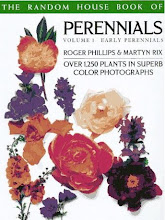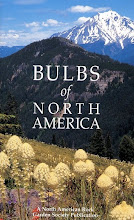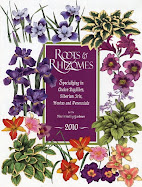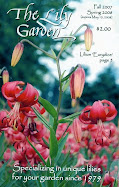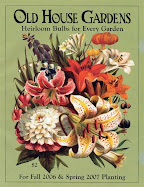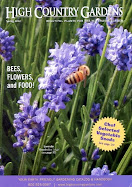Washington Native Formal Shade Garden
Here is a formal shade garden, for Seattle & the Pacific Northwest Coast, using native plants. The use of native plants has steadily increased in Seattle to the point where most nurseries now stock a fairly wide variety. While it may be that I have been reading too many European garden blogs, it seems that formal gardens are also becoming more popular. In any case, there is no need to use native plants only in wild gardens. If your taste is for symmetry, you can achieve this with native plants.
Both deciduous & evergreen plants are used in this garden. Quercus garryana (Garry Oak) is the center of this garden. It slowly grows to be a large & spreading deciduous tree. Two sides of the garden are lined with the much smaller Acer circinatum (Vine Maple) which are very colorful in fall. The most interesting feature of this garden is a double row of Sambucus racemosa (Red Elderberry). Reaching 18 feet in height, the arching canes will meet over head at the center of the walks, forming a pleached allee. Some lower branches may need to be removed for passage. Vaccinium ovatum (Evergreen Huckleberry) can be pruned into relatively uniform hedges. It is best not to clip them severely. Blechnum spicant (Deer Fern) is an evergreen perennial lining the walks. Space these about 18 inches apart. You will need to choose at least 1 additional groundcover to spread throughout the area behind them. Oxalis oregana (Redwood Sorrel) &/or Fragaria vesca (Woodland Strawberry) would give the most effective coverage. Specific shrubs, perennials & groundcovers are indicated. Use the additional perennials & groundcovers to fill empty spaces.
The main entry walk is 4 feet wide. Secondary walks are 3 feet wide. You can pave these in brick, stone or concrete. Use mortar, or the cracks will be invaded by plants. The entire garden is 40 feet by 30 feet across. Seattle lots are usually 40 or 50 feet wide. If your lot is 50 feet wide, you can add 2 more rows of Acer circinatum (Vine Maple) along the sides. Because this plan is symmetrical, solar orientation won’t matter. This garden would be best in a shaded area. The trees & shrubs are tolerant of sun & shade. They will eventually grow to shade the woodland plants beneath them. If you have room, you can add other gardens beyond this. A bosque or thicket would work well, especially along property lines. Remove the benches & continue the walks into adjacent spaces.
Washington Native Formal Shade Garden Plan
Trees
AC = Acer circinatum (Vine Maple): total # 16
G = Quercus garryana (Garry Oak): total # 1
Shrubs
PH = Physocarpus capitatus (Ninebark): total # 4
R = Rhododendron macrophyllum: total # 12, evergreen
S = Sambucus racemosa (Red Elderberry): total # 8
V = Vaccinium ovatum (Evergreen Huckleberry): total # 12, evergreen
Perennials
AR = Aruncus dioicus (Goat’s Beard): total # 4
B = Blechnum spicant (Deer Fern): total # 72, evergreen
E = Erythronium oregonum (Fawn Lily): total # 8
P = Polystichum munitum (Sword Fern): total # 12, evergreen
TE = Tellima grandiflora (Fringecup): total # 16, evergreen
TR = Trillium ovatum (Wakerobin): total # 4
Groundcovers
A = Asarum caudatum (Wild Ginger): total # 8, evergreen
D = Dicentra formosa (Bleeding Heart): total # 12
Additional Perennials & Groundcovers
Achlys triphylla (Vanilla Leaf)
Cornus canadensis (Bunchberry): evergreen
Corydalis scouleri (Scouler's Corydalis)
Disporum hookeri (Hooker’s Fairybells)
Fragaria vesca (Woodland Strawberry): will spread throughout, evergreen
Heuchera glabra, Heuchera micrantha (Alum Root): evergreen
Maianthemum dilatatum (False Lily of the Valley): will spread throughout
Oxalis oregana (Redwood Sorrel): will spread throughout
Smilacina stellata (Starry False Solomon’s Seal): will spread throughout
Tiarella trifoliata (Foamflower): evergreen
Tolmiea menziesii (Piggyback Plant): evergreen
Vancouveria hexandra (Inside-out Flower)
To learn more about these plants read Plants of the Pacific Northwest Coast by Pojar & MacKinnon, or visit the Washington Native Plant Society website.
Achlys triphylla (Vanilla Leaf)
Cornus canadensis (Bunchberry): evergreen
Corydalis scouleri (Scouler's Corydalis)
Disporum hookeri (Hooker’s Fairybells)
Fragaria vesca (Woodland Strawberry): will spread throughout, evergreen
Heuchera glabra, Heuchera micrantha (Alum Root): evergreen
Maianthemum dilatatum (False Lily of the Valley): will spread throughout
Oxalis oregana (Redwood Sorrel): will spread throughout
Smilacina stellata (Starry False Solomon’s Seal): will spread throughout
Tiarella trifoliata (Foamflower): evergreen
Tolmiea menziesii (Piggyback Plant): evergreen
Vancouveria hexandra (Inside-out Flower)
To learn more about these plants read Plants of the Pacific Northwest Coast by Pojar & MacKinnon, or visit the Washington Native Plant Society website.

































































